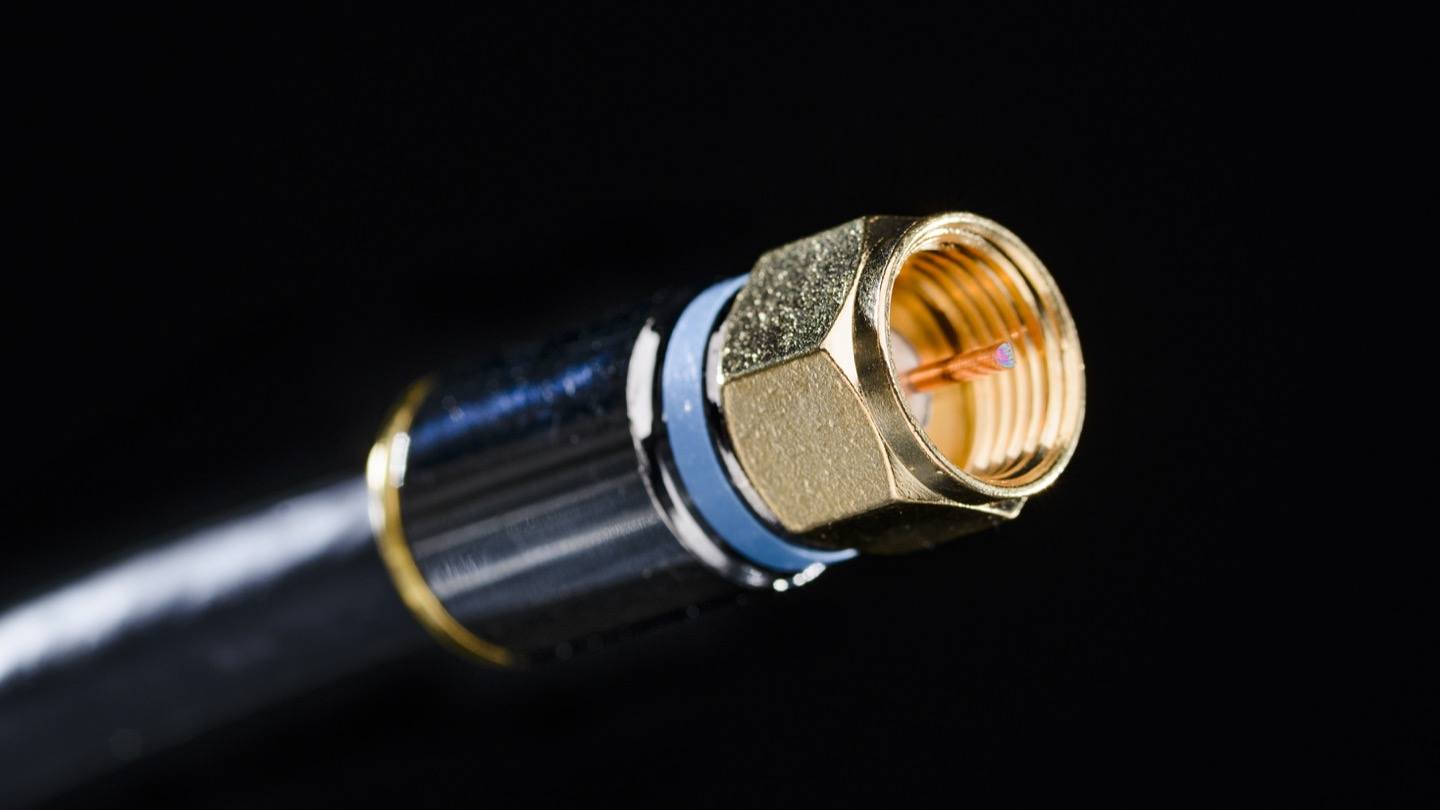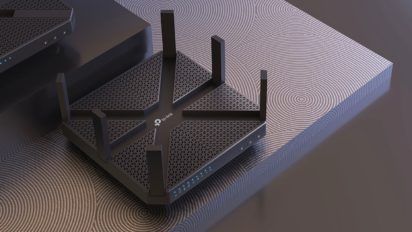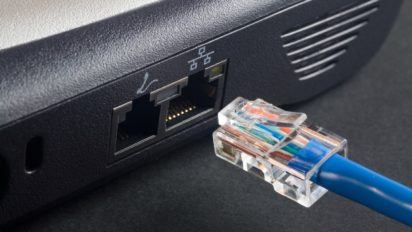Internet isn’t something that magically appears in your home.
Unless you’re on a satellite-based Wi-Fi network, there are likely cables from an internet service provider that go directly into your residence. Not all cables are created equal, though. It might be a fiber-optic or coaxial cable, and there are some key differences between them you need to know about to choose the best broadband provider.
Cable internet isn’t as fast as fiber internet, but you should still expect a reliable connection for work and play. We assembled this all-in-one hub about cable internet that lists both advantages and disadvantages.
Without question, fiber-optic cables are better than coaxial, but it depends on which service you have at your address as to which one you’ll need. 51.5% of U.S. households have fiber connections and access to at least 1 Gbps. Cable companies are now providing hybrid coaxial fiber services, too.
What’s a fiber-optic cable?
A fiber optic cable features small, flexible strands of glass or plastic. Unlike traditional copper lines, a fiber optic cable utilizes light to transmit a significant amount of data. This allows for more bandwidth on a fiber optic cable than a copper coaxial cable.
In addition, unlike with cable internet, the bandwidth for individual customers with fiber internet can get very large since they’re not forced to share a connection with others in the same area. No matter the hour, fiber internet shouldn’t slow down due to congestion. The high-speed data should stay blazing-fast and manage all home activities with ease.
How fast are the data speeds on fiber cables?
Fiber optic cables offer speeds of up to 100 Gbps, but of course, that depends on your internet service provider and equipment. Most internet service providers don’t go that fast by default, though. Be sure to choose the right plan and a wireless router. Then you’ll discover the many benefits of next-generation connectivity.
You can sign up for fiber internet with these companies:
| Provider | Price range* | Download speed range | Rating |
|---|---|---|---|
| Google Fiber | $70.00 – $100.00/mo. | 1,000 – 2,000 Mbps | 4.50/5 |
| AT&T | $55.00 – $250.00/mo.** | 300 – 4,700 Mbps | 4.43/5 |
| Verizon Fios | $49.99 – $109.99/mo. | 300 – 2,000 Mbps | 4.42/5 |
| CenturyLink | $50.00 – $75.00/mo. | 200 – 940 Mbps | 4.33/5 |
| Frontier Fiber | $39.99 – $154.99/mo. | 500 – 5,000 Mbps | 4.27/5 |
| Xfinity | $75.00 – $299.95/mo. | 3,000 – 6,000 Mbps | 3.57/5 |
| Windstream | $39.99 – $299/mo. | 200 – 8,000 Mbps | 3.95/5 |
| Cox | $50.00 – $150.00/mo. | 1,000 – 2,000 Mbps | 3.56/5 |
| Optimum | $40.00 – $180.00/mo. | 300 – 5,000 Mbps | 4.18/5 |
| Ziply Fiber | $10.00 – $300.00/mo. | 100 – 10,000 Mbps | 3.71/5 |
| Sparklight | $50.00 – $110.00/mo. | 200 – 1,000 Mbps | 3.73 |
| Earthlink | $54.95 – $99.95/mo. | 100 – 1,000 Mbps | 3.01 |
| WOW | $30.00 – $95.00/mo. | 100 – 5,000 Mbps | 4.00/5 |
| Spectrum | $49.99 – $89.99/mo. | 300 – 1,000 Mbps | 3.67 |
What’s a coaxial cable?
Made primarily of copper, a coaxial cable transmits data from place to place through electricity. It’s the technology that internet service providers started using when dial-up and digital subscriber lines (DSL) grew outdated. While there are improvements over dial-up and DSL, cable internet doesn’t quite trump fiber internet. Still, cable internet is available in most parts of the country and often at a budget-friendly price.
Cable internet does require a modem, which allows your home to connect to the internet service provider’s infrastructure. In turn, you plug the modem into a router. Together, the modem gets you a connection from the internet service provider and the router creates your Wi-Fi network. There are also some internet service providers which combine the modem and the router into a single device.
By purchasing your own modem or router, you could also save money. Internet service providers are known to tack on rental fees should you need their equipment.
How fast are the data speeds with coaxial cables?
Unfortunately, in most cases, coaxial cables fall short in terms of data speed. Some internet service providers are able to get up to 2 Gbps (2,000 Mbps), but it’s not too common. 1 gig is about it for cable connections. The coaxial cable that runs a connection into your home might be shared, too. When multiple customers in the same neighborhood are online at the same time, throttling could occur and lead to reduced speeds.
You can sign up for cable internet with these companies:
How do I know which cable to use? Do I need to replace any of my other equipment?
While you may be tempted to do so, fiber-optic and coaxial cables cannot be used interchangeably. Fiber internet will need a fiber-optic cable, and cable internet will need a coaxial cable. It depends on which type of internet service you’re on, so check with your internet service provider to know what’s connected to your home.
The plan with your internet service provider matters, too. It’s not as easy as getting fiber-optic cables installed and receiving up to 100 Gbps. Aside from the internet service provider’s geographic limitations, customers who are eligible for fiber internet need to pay a premium for access as well as top-tier, high-speed data. Keep that in mind if you’re interested in switching from cable to fiber internet.
As for other equipment, fiber internet doesn’t use a modem. Most likely, the internet service provider will install an optical network unit (ONT). The ONT, which runs a fiber-optic cable from outside the residence, then uses a coaxial or Ethernet cable to connect to the router. So you’ll likely have a coaxial cable even if fiber internet gets installed. Cable internet uses a coaxial cable regardless.
Shopping for fiber or cable internet? View which internet service providers are available in your area, and compare deals to select the best plan.
Fiber vs coaxial cable FAQs
If you are using cable internet, you will need a coaxial cable, which a technician would bring along when installing your internet.
No, you’ll need a fiber-optic cable for fiber service. Coaxial cables are for cable internet connections.
How much speed you can get from a coaxial cable depends on your plan. However, most cables will max out at 1 Gbps down and 35 Mbps up.

Written by:
Camryn Smith
Cammy is a writer with Allconnect, growing her broadband industry knowledge for over a year on the internet marketplace. Her expertise lies in home internet and broadband service with a focus on providers, plans…
Read more
Edited by:
Robin LaytonEditor, Broadband Content
-
Featured
![The best Wi-Fi routers of 2024]() The best Wi-Fi routers of 2024 Camryn Smith — 7 min read
The best Wi-Fi routers of 2024 Camryn Smith — 7 min read -
Featured
![Ethernet cable speed categories explained]() Ethernet cable speed categories explained Camryn Smith — 5 min read
Ethernet cable speed categories explained Camryn Smith — 5 min read -
Featured
![How fiber optic internet is making the internet industry more sustainable.]() How fiber optic internet is making the internet industry more sustainable. Ari Howard — 4 min read
How fiber optic internet is making the internet industry more sustainable. Ari Howard — 4 min read
Latest
-
Thursday, July 25, 2024
Worried about losing your signal? This is how to keep your satellite dish cleanDavid Anders — 6 min read
-
Tuesday, July 23, 2024
The best free TV and movie streaming services 2024Camryn Smith — 5 min read
-
Tuesday, July 23, 2024
Everything you need to know about internet speedsRobin Layton — 8 min read






